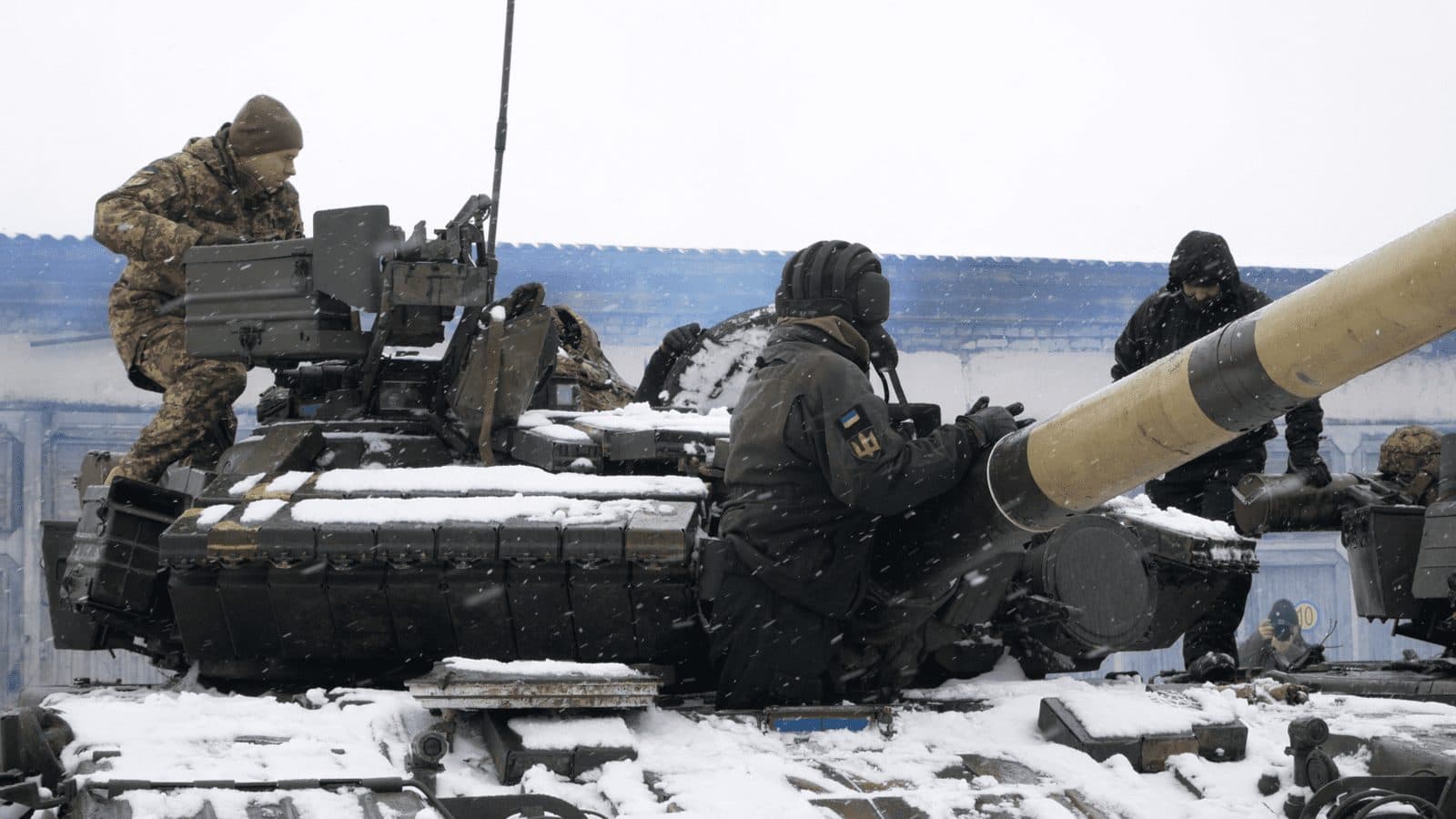As Ukraine Crisis Underscores Bitcoin as Risk Asset, Volatility May Be Here To Stay
Cryptocurrencies have largely traded in tandem with US stocks as of late

Ukrainian army | Source: Shutterstock
- Bitcoin and ether both plunged more than 10% on Thursday before recovering to notch modest 24-hour gains
- Crypto funding behind the conflict raises the possibility of quicker regulation, industry participants say
While the crisis in Ukraine roils global equity and digital asset markets, bitcoin and other cryptocurrencies are increasingly seen as risk assets in the eyes of institutional traders.
Recent shocks have hindered the premise of bitcoin as digital gold, or a store of value — its standing as a bellwether investment in times of turmoil has likewise been called into question.
Bitcoin and other cryptocurrencies, including ether, plunged more than 10% Thursday as the Russian incursion into Ukraine started, before bouncing back to book modest gains on the day. Digital assets also continued to rise Friday as traders appeared to shake off the impact of medium- and longer-term implications of the invasion.
Kevin Kang, co-founder of digital asset hedge fund firm BKCoin Capital, attributed the recovery to “short covering and equities recovering earlier losses.”
Indeed, bitcoin has traded in near tandem with stocks as of late. Wary of the correlation, big-time traders have largely stayed on the sidelines of the latest market moves, according to Rance Masheck, CEO of trading platform iVest Plus.
“Overall, [crypto] moved with the way the US market moved,” Masheck said. “Some of it came back, just like the market came back, but the big players aren’t jumping in or bailing out.”
iVest data show a decline of about 50% in bitcoin trades over $100,000 from the same time last week — plus, the firm recorded a net outflow of a modest $19 million, indicating few directional bets.
Bitcoin was up 9.6% in the last 24 hours as of midday Friday, while showing a weekly decline of -2.9%. Ether, meanwhile, increased 10.7% in the last day, paring week-long losses to -5.6%.
Volatility shows few signs of slowing.
“Historically, the day of the invasion marked a local bottom in the market as uncertainty dissipates, but there are a lot of talks about how Russia may be just starting and may go into Poland and other near NATO nations, which will put the US in a limbo,” Kang said. “There are still a lot of uncertainties in the market. We expect the volatility to continue.”
Brian Brooks, CEO of bitcoin mining and crypto technology company Bitfury, said bitcoin is trading as it should in a risk-off environment where investors “are going to retreat to Treasurys and cash for a short period of time.”
Other macro factors are at play behind recent market volatility, too, he said — including looming tax bills on the horizon that traders may not have budgeted for. A recent drying up of liquidity hasn’t necessarily helped matters either.
“Even though bitcoin in part has an element of store of value to it, it’s still thinly traded enough that it’s acting more like a risk asset,” Brooks said. “Other than bitcoin, the right way to think about crypto tokens is they’re risky internet stocks — and internet stocks are way down.”
Meanwhile, the growing prospect of rising interest rates in the US — expected as a means to tamp down runaway inflation — is likewise weighing on crypto markets, according to David Tawil, president of cryptocurrency hedge fund firm ProChain Capital. Ongoing supply chain jams are also roiling traditional financial instruments and digital assets, Tawil said.
“Clearly, the downdraft in the asset class has been because the dominant feature has been, essentially, a growth-tech story, a risk-on asset,” Tawil said. “Therefore, when we get into a risk-off environment, it’s going to trade down, including inflation, rising rates and now geopolitical instability.”
The Ukraine tensions also raise the possibility of sanctioned Russian oligarchs turning to crypto to transfer money as banks have cut them off, Masheck said — as well as the government itself tapping digital assets to circumvent traditional finance. It heightens the prospect of US regulators taking a faster pace as both Ukraine and Russia have moved to legalize and regulate the space.
“Obviously, those sanctions will have some level of impact, but crypto allows for a little bit of a circumvention of some of that,” he said.
Masheck and Brooks both expect bitcoin to behave less like a risk asset and lose its correlation to stocks as the asset evolves.
“As we move forward here, I think we’ll start to see more of a divergence between what US markets are doing and what’s happening in crypto,” Masheck said.
Get the news in your inbox. Explore Blockworks newsletters:
- The Breakdown: Decoding crypto and the markets. Daily.
- 0xResearch: Alpha in your inbox. Think like an analyst.






